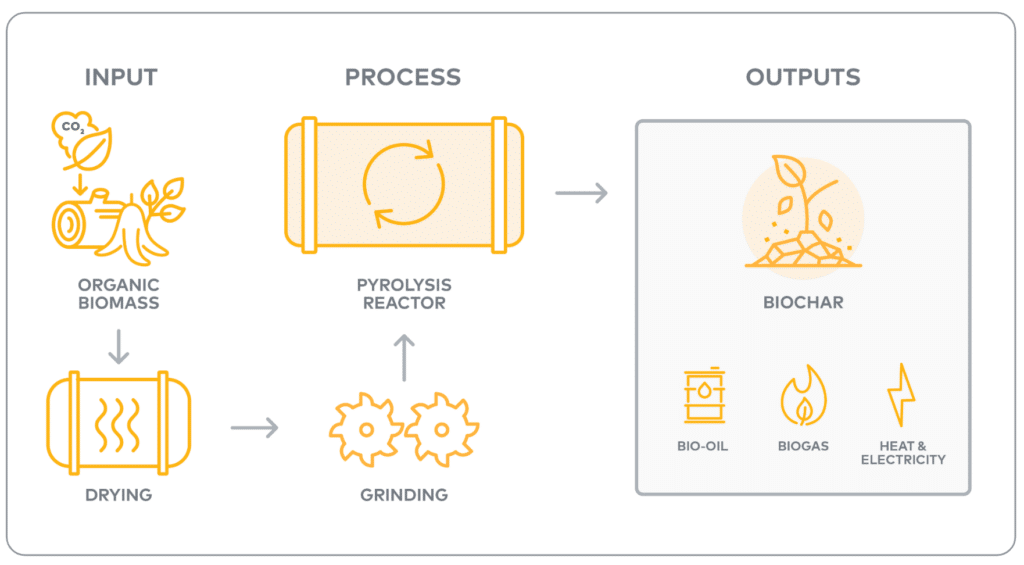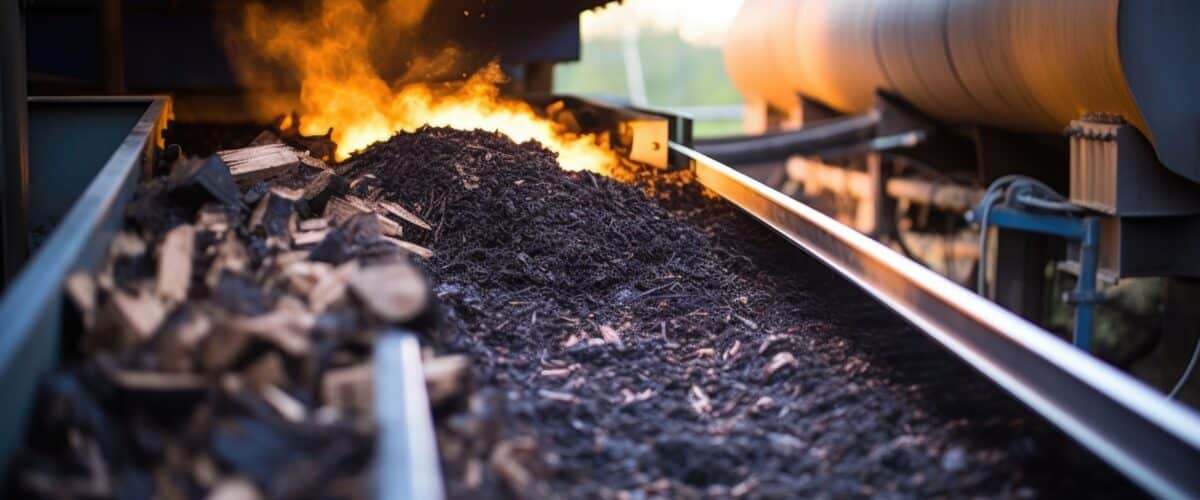In a time where the urgency to combat climate change has never been greater, innovative solutions are rising to the forefront of the voluntary carbon market (VCM). Among these, biochar has captured the attention of organizations, policymakers, and sustainability advocates alike, not because it’s innovative and relatively new to the market, but for its ability to remove and store carbon from the atmosphere. This carbon-rich material, derived from organic waste, is making waves for its simplicity and effectiveness, offering a scalable solution to one of the most pressing challenges we face today.
Biochar is now recognized as a new ally in our pursuit of net-zero emissions, while also playing a key role in rejuvenating exhausted soils, mine reclamation, and much more, thus reshaping our approaches to environmental stewardship and sustainable development.
The Science of Biochar
Biochar’s journey from organic waste to carbon sequestration begins with pyrolysis. This process thermally decomposes organic materials such as agricultural residues or forestry waste at high temperatures in an oxygen-deprived environment, preventing combustion or the release of CO2.

Normally, the carbon captured in the biomass would re-enter the atmosphere as CO2 through the decay of the raw material, which is key to biochar’s effectiveness, offering a form of carbon storage that can last hundreds of years in the soil.
Additionally, the heat generated through the pyrolysis process can also be utilized as a renewable energy source, positioning biochar production as a true circular solution, removing CO2 from the cycle and locking it away while simultaneously providing clean energy.
Beyond Carbon Sequestration 
While a formidable ally in the fight against climate change, biochar offers a range of benefits that extend far beyond its carbon sequestration capabilities. Incorporating biochar into a corporate climate strategy not only addresses immediate sustainability needs but also aligns with broader sustainability goals. Remarkably, biochar projects have the potential to contribute to 12 of the 17 United Nations Sustainable Development Goals, underscoring their multifaceted value in fostering a more sustainable and equitable world.
Environmental Benefits of Biochar:
- Enhances Soil Health: Biochar enhances agricultural productivity by improving soil’s ability to retain water and nutrients, making it especially valuable in restoring vitality to degraded soils.
- Economic Upside for Farmers: Introducing biochar into agricultural practices can provide additional income streams for farmers, opening up new job opportunities in rural areas.
- Site Remediation: Its ability to absorb contaminants makes biochar an effective solution for cleaning up polluted sites, safeguarding ecosystems and communities.
- Water Treatment: As a natural sorbent, biochar can be employed in water treatment processes to remove impurities and pollutants, ensuring cleaner water sources.
- Renewable Energy Source: The pyrolysis process used to create biochar can generate renewable energy, contributing to the reduction of fossil fuel dependence.
- Reduces Air Pollution: By converting biomass into biochar, we can avoid the air pollution typically associated with open biomass burning, leading to cleaner air for the surrounding communities.
- Waste Management: Biochar provides an innovative way to divert organic waste from landfills, reducing methane emissions and contributing to a true circular economy.
Carbon Projects and Methodologies
Although it is estimated that biochar was used for agriculture for over 1000 years, it was not until recently that methodologies in the VCM were approved and biochar began becoming widely accepted as a powerful tool to mitigate climate change.
The turning point came with the Intergovernmental Panel on Climate Change’s (IPCC) 2018 Special Report, which highlighted that merely reducing emissions would be insufficient to limit global warming to 1.5°C. This revelation prompted a surge in interest in carbon removal technology, with biochar emerging as one of the leading candidates.
In 2019 biochar became widely acknowledged in VCM, as Puro.earth launched the first methodology, and carbon credits from biochar became available.
Currently, the market now has three approved methodologies for biochar, with more than 150 projects either operational or in the pipeline. Given biochar’s rising prominence, we anticipate a rapid increase in these numbers, signaling an exponential growth in biochar initiatives in the coming years.
Getting Started
Biochar stands out not only for its remarkable carbon sequestration capabilities but also for its broader environmental advantages, from rejuvenating soils to reducing waste.
As we further understand the importance of carbon removals in hitting net zero climate goals, 3Degrees is here to be your guide in this journey. Contact us today to learn more about carbon removals or biochar, and how you can begin incorporating them into your organization’s long-term sustainability strategy.

